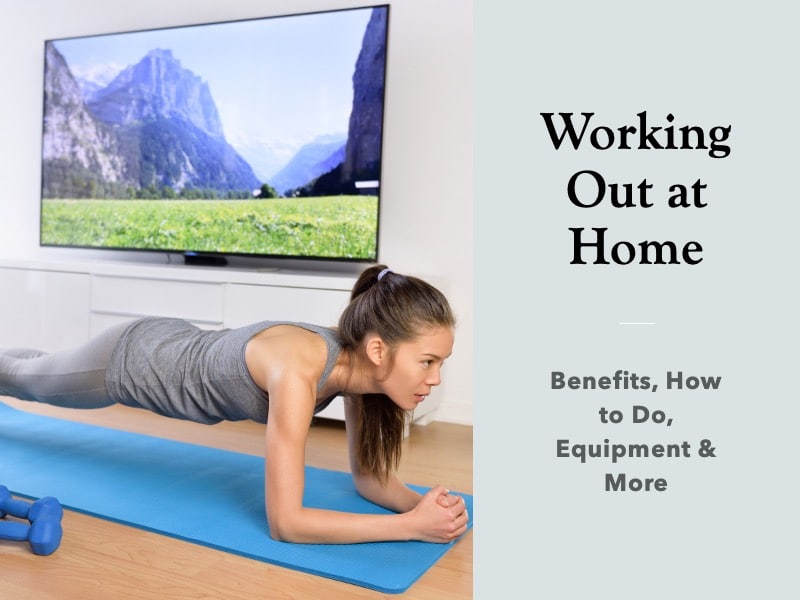Working Out at Home: Benefits, How to Do, Equipment & More
As a professional basketball player who’s trained in everything from small apartments and hotel rooms in Europe to Olympic-level gyms, I’ve learned to embrace the power and practicality of working out at home.
Whether I’m preparing for the season, rehabbing an injury, or just staying strong during travel, home workouts have been a reliable part of my routine for over a decade.
Although I always used my house and backyard for bodyweight exercises and other types of home workouts, I started learning more home gym ideas and way to improve my home gym during the COVID-19 lockdowns and quickly discovered how much I value the ability to train on my own terms, without commuting, crowds, or a rigid schedule.
One of the biggest advantages of working out at home is the time saved.
There’s no commute, no waiting for equipment, and no distractions.
That’s time I get back for recovery, family, or just being present in my day.
It’s also financially smart.
A quality resistance band set, some adjustable dumbbells, or a monthly app subscription costs a fraction of what most gym memberships do, and delivers the same or better results when used correctly.
Affiliate Disclaimer: This article contains affiliate links, which means I may earn a commission if you make a purchase through these links, at no extra cost to you. I only recommend products I personally use and trust to support energy, performance, and overall health. Thank you for supporting my work and helping me continue to share research-backed fitness and nutrition content.
More importantly, working out at home gives you total freedom over how and when you move.
Whether you prefer strength training, mobility exercises, HIIT, bodybuilding, or anything else, you can train at your own pace and in your own style.
You don’t need to compare yourself to anyone else or feel judged for where you’re at.
You just need to show up and move.
That’s why I regularly share my own “Workout of the Day” and encourage others to build that healthy habit, too.
It’s not about having a perfect routine, it’s about having a consistent one that fits your life.
If you’re serious about starting or leveling up your home workouts, I highly recommend the BODi App.
It offers expert-designed, high-quality home workout plans that cover everything from beginner bodyweight circuits to advanced hypertrophy training.
Whether you’re just getting started or want to push your limits, it’s one of the best tools I’ve found for creating structure and motivation at home.
With the right guidance and some consistent effort, working out at home doesn’t just work, it works exceptionally well.
Benefits of Working Out at Home
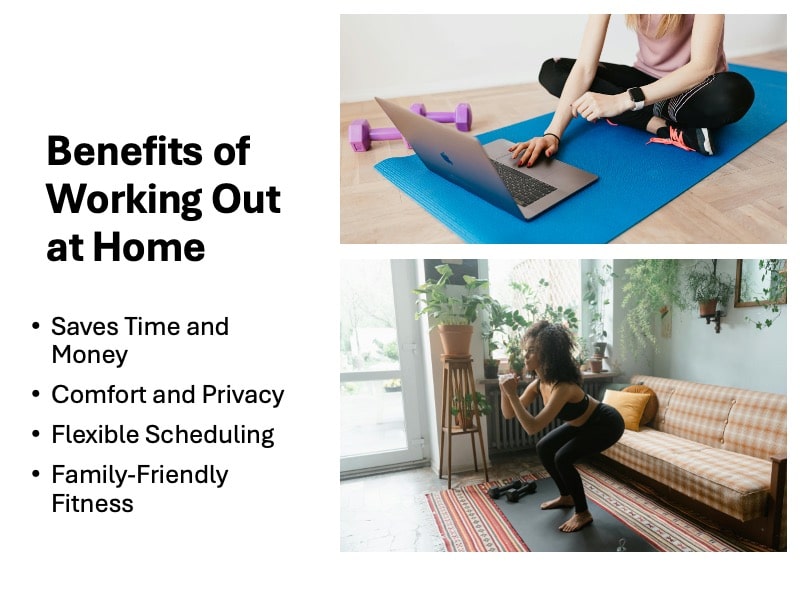
Working out at home offers more than just convenience; it creates a sustainable, flexible path to fitness that supports long-term consistency.
From saving money to reducing stress, here’s why home workouts are an effective and empowering option for many people.
Saves Time and Money
One of the biggest advantages of home workouts is eliminating the need for a commute or expensive gym membership.
This not only saves time but also reduces barriers that often prevent people from exercising consistently, such as traffic, scheduling conflicts, or gym fees.
You can reinvest that time and money into equipment, coaching apps, or nutrition, creating a more comprehensive wellness routine from the comfort of your own space.
Comfort and Privacy
Training at home allows you to exercise in an environment where you feel safe, confident, and free from outside judgment.
This is especially helpful for beginners, people returning from injury, or anyone who feels intimidated in public gym settings.
Having control over your environment can also help reduce performance anxiety and make workouts more enjoyable, ultimately increasing consistency over time.
Flexible Scheduling
With no gym hours to navigate, you can train when it fits your life—early mornings, nap time, lunch breaks, or late nights.
This makes home training ideal for parents, shift workers, or anyone with an unpredictable schedule.
Flexibility is a major key to habit formation, and working out at home gives you the ability to stay consistent even when life gets busy.
Family-Friendly Fitness
Home workouts make it easier to include the whole family in your wellness routine.
In fact, one of the best health and fitness tips for children is to model healthy behaviors and physical activity in front of them.
Whether you’re doing bodyweight exercises while your kids play or using resistance bands during nap time, you’re setting a healthy example.
This creates a positive environment where movement becomes an integral part of daily life, and children learn that fitness is both normal and important.
Is Working Out at Home Effective?
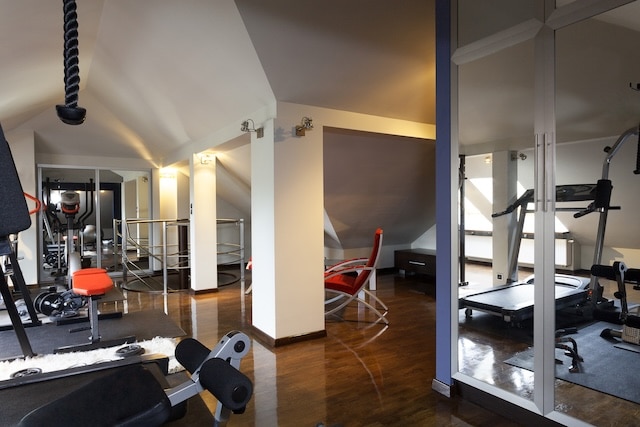
Many ask, “Does working out at home actually work?”
Yes, if done properly.
Bodyweight resistance training, high-intensity interval training (HIIT), and progressive overload using household or compact equipment can build strength, burn fat, and improve mobility just like the gym.
Pros & Cons of Working Out at Home vs. the Gym
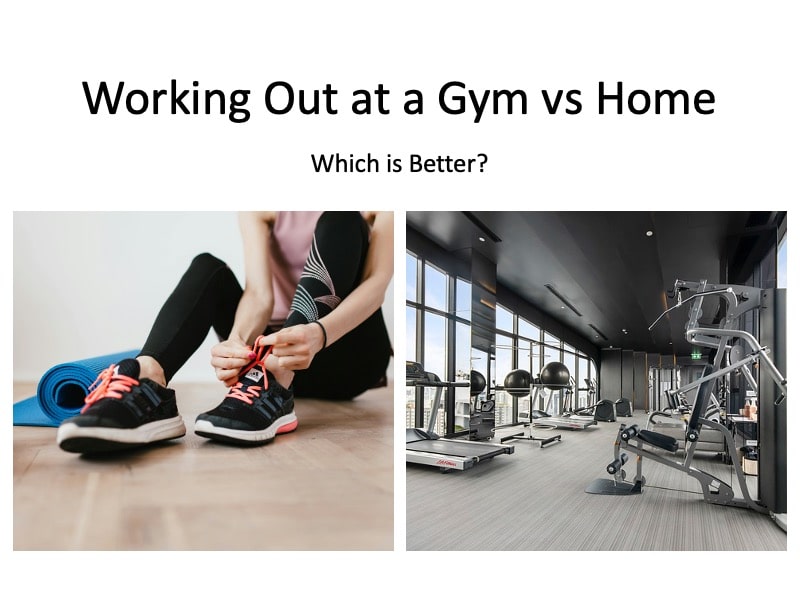
When comparing working out at a gym vs at home, it’s important to consider factors like equipment access, time availability, cost, and how each environment impacts your consistency and motivation.
Both working out at home and training in a gym can help you build strength, burn fat, and improve your fitness.
However, each option comes with its own set of advantages and limitations.
Home Workouts
Home workouts offer a flexible, affordable, and effective way to build strength, burn fat, and stay consistent, without ever leaving your house.
Whether you’re using just your bodyweight or a few key pieces of equipment, working out at home makes fitness more accessible and adaptable to your schedule and lifestyle.
It’s a great option for busy professionals, parents, and anyone who values privacy and convenience.
Pros:
- Minimal Equipment Needed: Bodyweight exercises, resistance bands, and a few dumbbells can go a long way.
- Maximum Convenience: Train anytime, no commute required.
- Lower Cost: No monthly membership fees or travel expenses.
- Flexible and Family-Friendly: Easily fit workouts into your daily routine—even with kids at home.
- Private and Comfortable: Ideal if you’re self-conscious or prefer to train without distractions.
Cons:
- Limited Equipment Variety: May lack access to heavy weights or machines needed for maximal strength training.
- Space Constraints: Smaller living areas can limit movement options or exercise variety.
- Harder to Progress Without Guidance: Without a structured program or coaching, plateaus are more common.
- Potential for Lower Accountability: Without a social setting or trainer, it’s easier to skip workouts.
Gym Training
Gym training offers access to a wide range of equipment and an environment specifically designed for optimal physical performance.
For those seeking maximum variety, heavy lifting options, or the structure of group fitness classes, the gym can be an ideal place to train.
It’s especially beneficial for intermediate to advanced lifters who need specific tools to continue progressing toward their strength or physique goals.
Pros:
- Access to Full Equipment Lineup: Barbells, cables, machines, and cardio equipment offer limitless programming variety.
- Structured Environment: The gym atmosphere can enhance focus and dedication.
- Group Fitness and Personal Training: Access to expert guidance and community support.
- Ideal for Advanced Strength or Bodybuilding Goals: Specialized equipment allows for progressive overload at higher levels.
Cons:
- Time Commitment: Includes travel time, waiting for equipment, and navigating crowds.
- Higher Costs: Monthly membership fees, transportation, and extras like locker rentals can add up.
- Less Personal Freedom: Music, temperature, and overall vibe are out of your control.
- Intimidating for Beginners: The gym environment can feel overwhelming if you’re just starting out.
Can Working Out at Home Be as Effective as Working Out at the Gym?
Yes, working out at home can be just as effective as training in a gym, especially for goals like fat loss, functional strength, improved mobility, and general health.
The key is following a progressive, goal-specific plan and staying consistent.
For beginners or those looking to build foundational strength, home workouts are often more sustainable.
But for athletes focused on peak strength, bodybuilding, or sport-specific power, the gym’s equipment and structure can provide valuable tools that are harder to replicate at home.
How to Start Working Out at Home (Especially for Beginners)
Starting a home workout routine doesn’t require fancy gear or a background in sports science. Here’s how to begin:
Set Realistic Goals

Begin with attainable, measurable SMART goals, such as “work out three times per week” or “complete 15-minute bodyweight workouts.”
Consistency beats intensity at first.
Pick a Program or Plan
Choose structured plans based on your goals. Some of the best home workouts are simple, effective, and tailored to what you’re trying to achieve:
- Weight Loss: Bodyweight HIIT, dance cardio, circuit training
- Muscle Gain: Resistance bands, dumbbell strength workouts, push-pull splits
- Mobility & Recovery: Mobility exercises, pilates, stretching routines
Focus on Technique
Proper form is essential. Use mirrors or video yourself to monitor posture and movement patterns.
Gradually Increase Intensity
Add reps, time, resistance, or complexity. Progression is key whether you’re at a gym or on your living room floor.
Best Equipment for Working Out at Home
You don’t need a full gym setup to see results. Here are effective tools to elevate your home training:
- Resistance Bands: Versatile, portable, and perfect for full-body training
- Adjustable Dumbbells: Space-saving and scalable for progressive overload
- Pull-Up Bar: Great for upper-body strength and core work
- Kettlebells: For strength, power, and metabolic conditioning
- Bench or Sturdy Chair: Useful for step-ups, dips, Bulgarian split squats
- Stretching Mat: Comfort and grip for floor-based movements
Along with this equipment, I highly suggest you invest in a solid home gym rubber floor.
They are easy to maintain and there are several options which will help protect your current floor and provide an excellent workout experience.
Tips for Working Out at Home Without Equipment
If you’re wondering how to start working out at home without equipment, begin with foundational bodyweight exercises like:
- Push-ups
- Squats
- Lunges
- Glute bridges
- Planks
- Burpees
Combine them into a 20-30 minute full-body circuit 3–5 times per week, and you’ll build a strong base.
How to Stay Motivated While Working Out at Home
Staying on track without external accountability can be tough. Use these strategies to motivate yourself to work out at home:
- Set a consistent time each day
- Use fitness apps like BODi, Nike Training Club, Fitbod, or Centr
- Join online communities or social media challenges
- Track your progress with a calendar, journal, or app
- Celebrate milestones—progress photos or personal records matter!
Final Thoughts: Is Working Out at Home a Good Option?
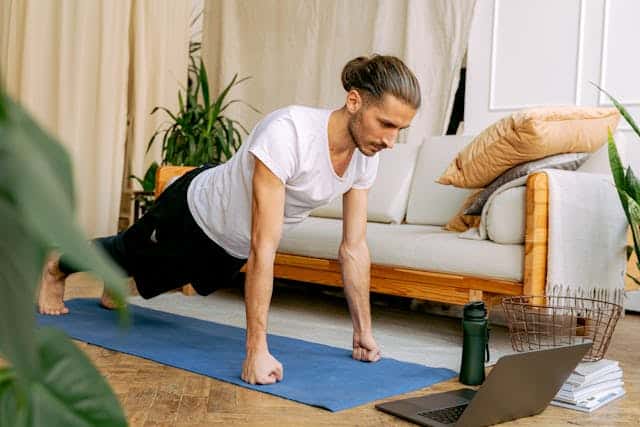
Working out at home is not only convenient, it’s incredibly effective when done with intention, structure, and a bit of creativity.
Whether you’re a beginner, trying to lose weight, or focused on building muscle, your living room, basement, or backyard can become a high-performance training zone.
Personally, I began transitioning away from traditional gyms and started building my own home gym during the early days of COVID.
That shift completely changed how I approach training.
While I still love the energy and environment of a well-equipped gym, having a dedicated home workout space has added freedom and flexibility that’s hard to beat.
There’s no commute. No waiting for machines. No need to rearrange my schedule around gym hours.
I can train early in the morning, during my son’s nap, or late at night if that’s when I feel best.
I can walk around the house between sets, integrate running in my backyard, or doing kettlebell swings on the back porch, as my entire home becomes part of the workout.
This freedom makes it easier to stay consistent and adapt training to my life, not the other way around.
That’s the true power of working out at home: it lets you take control of your fitness on your terms.
Frequently Asked Questions About Working Out at Home
This website does not provide medical advice. This website site does contain affiliate links, and purchases may earn a commission.
Read my Medical Disclaimer, Review Disclaimer, and Publishing Policies for more details. Use of this site indicates acceptance of these terms.

